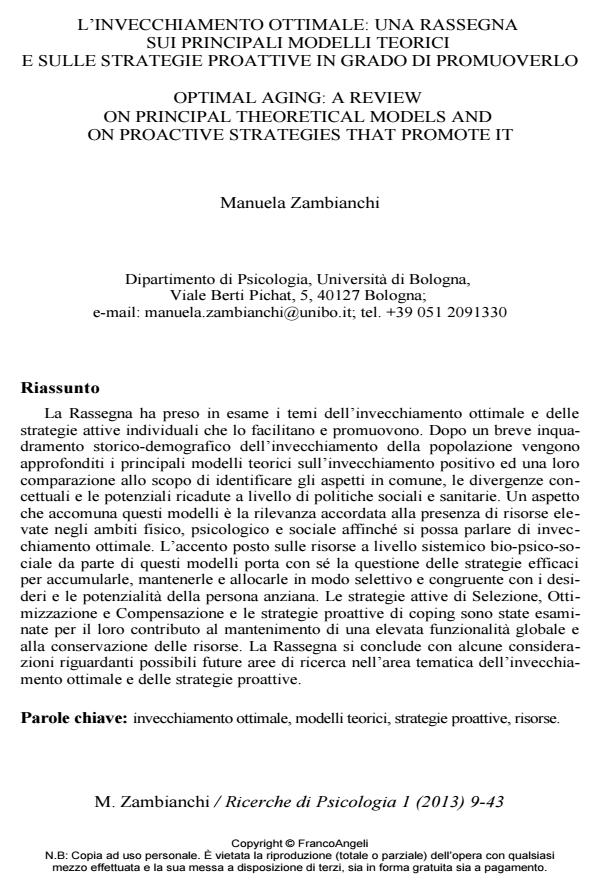Optimal aging: a review on principal theoretical models and on proactive strategies that promote it
Journal title RICERCHE DI PSICOLOGIA
Author/s Manuela Zambianchi
Publishing Year 2013 Issue 2013/1
Language Italian Pages 35 P. 9-43 File size 371 KB
DOI 10.3280/RIP2013-01001
DOI is like a bar code for intellectual property: to have more infomation
click here
Below, you can see the article first page
If you want to buy this article in PDF format, you can do it, following the instructions to buy download credits

FrancoAngeli is member of Publishers International Linking Association, Inc (PILA), a not-for-profit association which run the CrossRef service enabling links to and from online scholarly content.
The Review has analyzed the issues related to optimal aging and the active, individual strategies that could promote it. After a brief examination of the historical and demographic processes that are involving the population, the Review investigates the contemporary principal models on optimal aging, and makes a comparison aimed to identify common features and conceptual differences among them. The potential impact on health and social policies of these conceptions are also evidenced and discussed. A common aspect of these models is the central relevance attributed to the presence of high level of physical, psychological and social resources, in order to achieve an optimal aging. The special attention deserved to systemic bio-psycho-social conception of resources lead to the question of which could be the effective strategies through which these resources can be accumulated over time and selectively allocated according to desires, values and potentials of old people. The active strategies of Selection, Optimization and Compensation together with proactive coping strategies are examined for their contribution to the maintenance of a high overall functioning and to the conservation of resources. The Review wind up with several hypotheses concerning future areas of research on the issues of optimal aging and proactive strategies.
Keywords: Optimal aging, theoretical models, proactive strategies, resources
Manuela Zambianchi, L’invecchiamento ottimale: una rassegna sui principali modelli teorici e sulle strategie proattive in grado di promuoverlo in "RICERCHE DI PSICOLOGIA " 1/2013, pp 9-43, DOI: 10.3280/RIP2013-01001